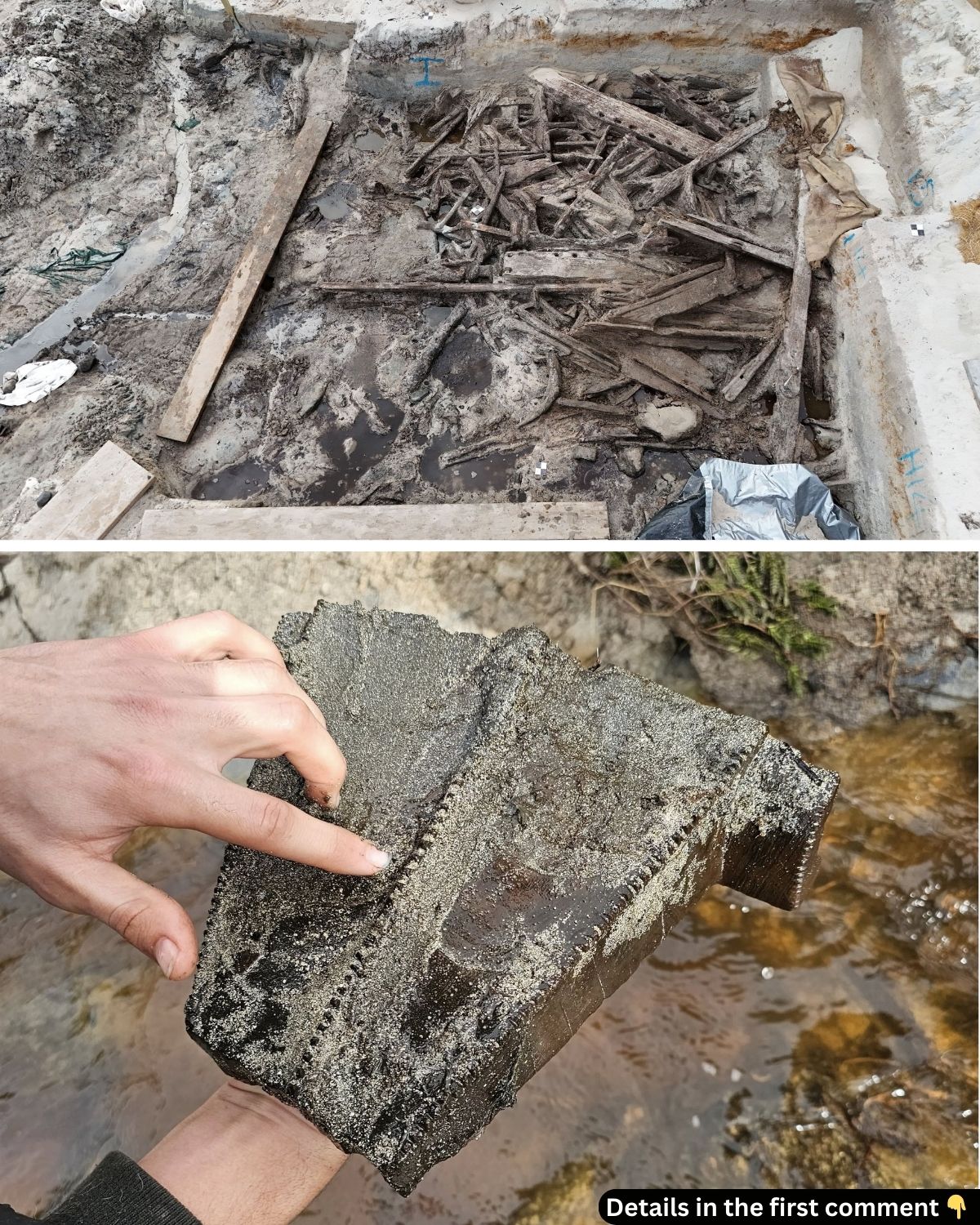The Chatham Islands, a remote archipelago located 500 miles off the coast of New Zealand, has long been a site of historical intrigue. Recently, an extraordinary archaeological discovery has placed the islands at the center of international attention. A traditional Polynesian ocean-going canoe, or waka, has been uncovered by a father and son duo, Vincent and Nikau Dix. What began as a casual search for wood has now become one of New Zealand’s most significant archaeological finds, potentially reshaping our understanding of Polynesian history and seafaring traditions.
The Discovery of the Waka: How It All Began
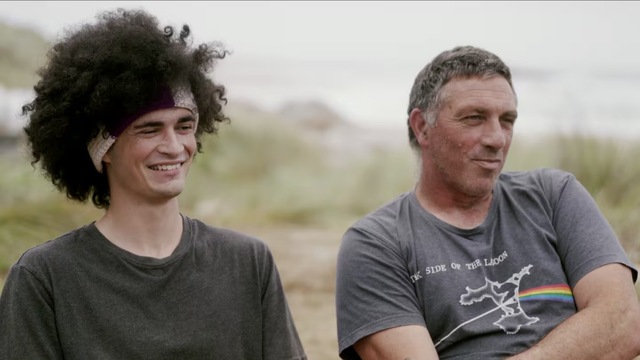
In the summer of 2024, father and son, Vincent and Nikau Dix, were taking their dogs for a run on the beach when they noticed some unusual timbers protruding from a creek near their home on the Chatham Islands. Initially, they believed the pieces could be repurposed into furniture, like a coffee table, and started collecting them. However, as they began to assemble the pieces, they realized they were forming a shape resembling a boat.
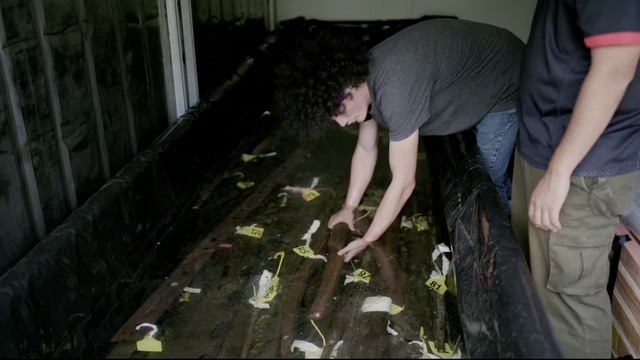
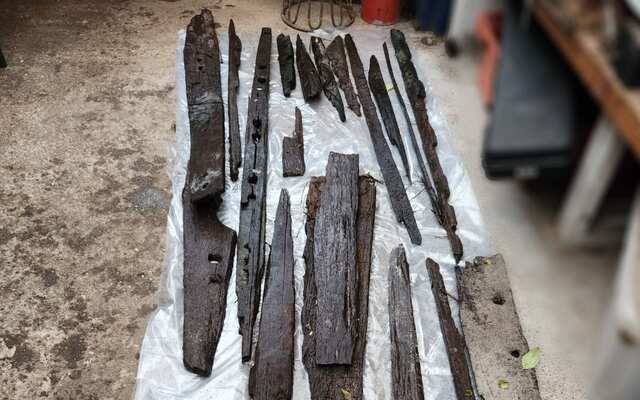
Their initial excitement grew when they returned to the site after a storm and uncovered additional fragments, including one with intriguing carvings. The realization dawned upon them that they had stumbled upon something far more significant than just discarded timber—it was part of a traditional Polynesian waka. The Dix family immediately contacted local authorities, triggering a flurry of activity from archaeologists.
Video
Watch the video to learn about the waka found on the beach, which could be the most important discovery in New Zealand archaeology! Don’t miss this groundbreaking find.
The Waka’s Cultural and Archaeological Importance
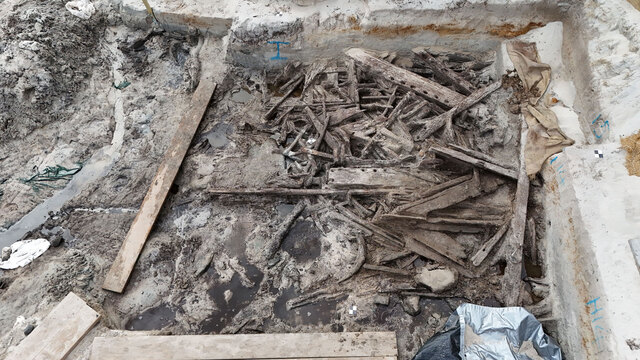
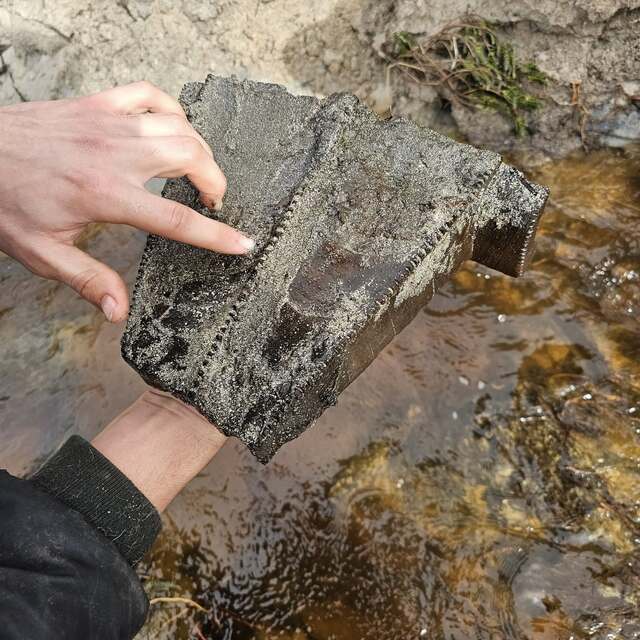
Waka are more than just boats; they are a central element of Polynesian culture and history. These ocean-going canoes were vital for transportation, fishing, and cultural activities, embodying the Polynesian connection to the sea and their exploratory spirit. Crafted from wood and built for both sailing and paddling, waka were used for long-distance voyages across vast oceans, linking distant islands.
The Chatham Islands, also known as Rēkohu, holds a special place in Polynesian maritime history. Located at the crossroads of Polynesian navigation, these islands were among the furthest points reached by Polynesian explorers. The discovery of a waka here is a powerful reminder of the vast networks of ocean travel that existed long before European exploration began.
This find is also culturally significant for the local iwi (tribes) and Moriori, the indigenous people of the Chatham Islands. Maui Solomon, a prominent figure in indigenous rights, has voiced his belief that the waka may have been a “Moriori ancestral waka,” potentially linking the find to the arrival of his ancestors on the islands. The waka’s carvings and design elements, such as notching and bird-like handles, align with traditional Moriori boats, which were smaller coastal vessels used by the indigenous people of the Chatham Islands.
Excavation and Preservation of the Waka Fragments
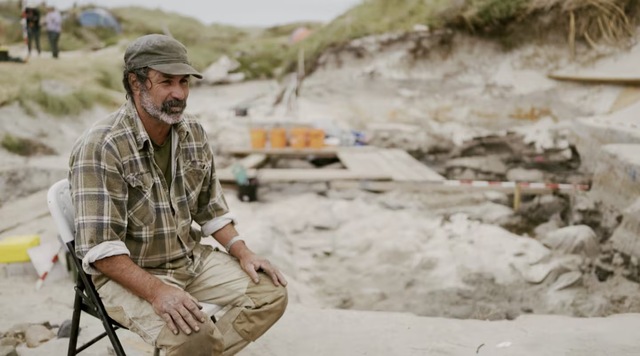
Once the discovery was made public, archaeologists began a careful excavation of the site. A team led by Justin Maxwell, a seasoned archaeologist, has overseen the recovery of over 450 pieces of the waka, with many more likely still buried along the coastline. The excavation process has been meticulous, as the state of preservation is exceptional due to the waterlogged environment in which the fragments were found.
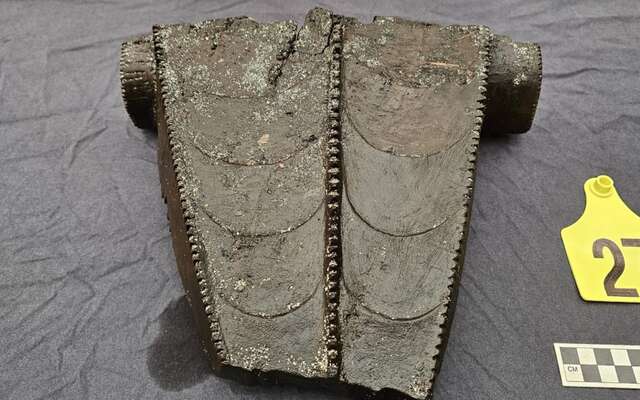
The recovered pieces include a variety of materials, ranging from large planks of wood with holes for lashings to smaller, intricately carved pieces made from pāua (abalone) shell and obsidian. These decorative materials suggest that the waka was not just functional but also a symbol of cultural and spiritual significance. Additionally, plaited rope and woven materials believed to be part of a sail were uncovered, providing further insight into the technical and artistic capabilities of Polynesian boat-building.
The waterlogged environment has also played a crucial role in preserving the fragile materials of the waka. By keeping the fragments submerged in water, conservationists have been able to prevent the wood from drying out and deteriorating. This approach ensures that the artifacts remain stable while further analysis is conducted, including radiocarbon dating and other scientific techniques to determine their age and origin.
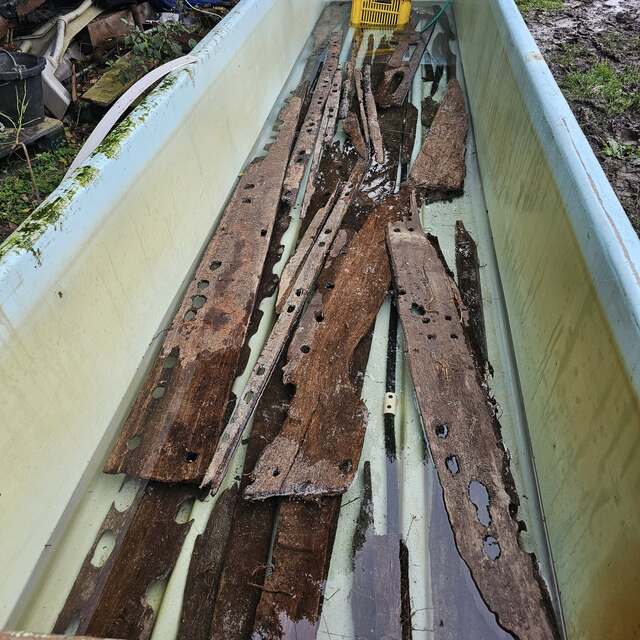
The Mystery of the Waka’s Age and Origins
While the exact age of the waka remains uncertain, the recovered fragments provide important clues. Initial tests have linked some of the wood fragments to native Aotearoa (New Zealand) trees, such as pukatea, tōtara, and rimu, suggesting that the vessel could be centuries old. However, the true age of the waka will only be confirmed once radiocarbon dating is completed.
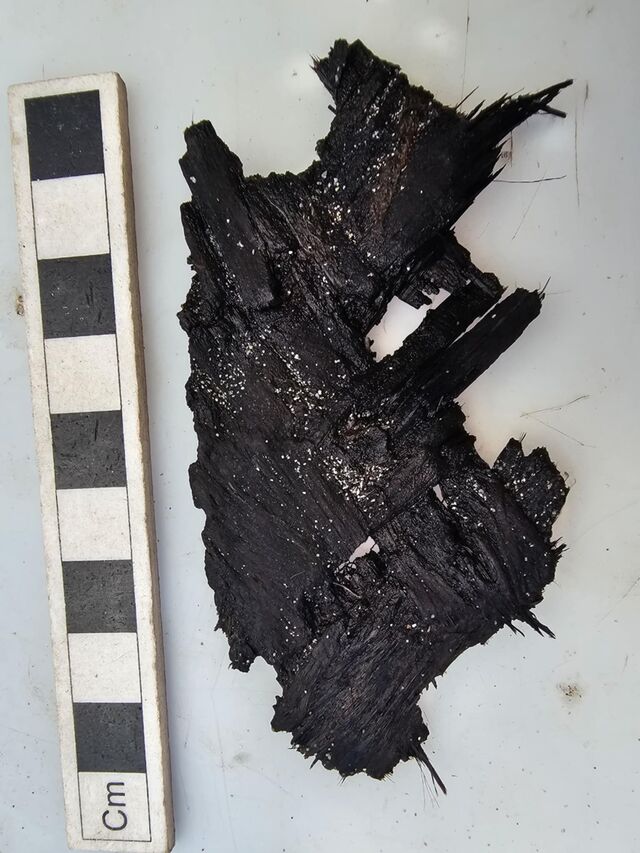
The origins of the waka are also a subject of debate. Some local iwi, particularly the Moriori, believe that the waka may be linked to ancient Moriori vessels mentioned in oral traditions. These stories describe a waka named Rangihoua, which was said to have been wrecked on the north coast of the Chatham Islands after an ill-fated voyage. Cultural monitor Tom Lanauze, of Ngāti Mutunga and Moriori descent, has noted that the find aligns with these ancient narratives.
On the other hand, archaeologists like Justin Maxwell are cautious about jumping to conclusions without further evidence. While the design and materials suggest a long history, the full story of the waka’s origin and its journey to the Chatham Islands is still to be uncovered. Maxwell emphasized that there is still much more to learn as the excavation continues, and the full scope of the discovery has yet to be realized.
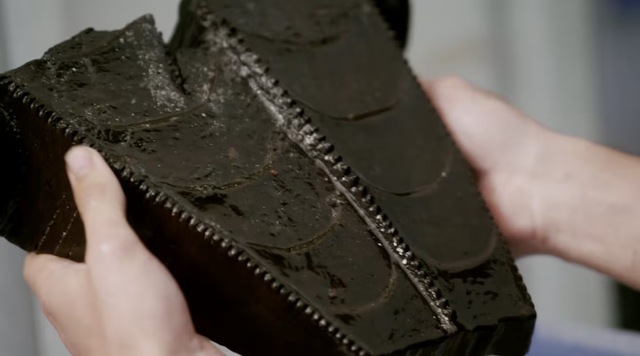
The Waka as a “Taonga Tūturu” (Cultural Treasure)
In addition to its archaeological significance, the waka holds deep cultural value for the Māori and Moriori peoples. Under New Zealand’s heritage laws, the waka is considered a “taonga tūturu,” a protected cultural treasure that embodies spiritual power, lineage, and life force. This designation means that the waka cannot be sold or traded, and any ownership claims must be adjudicated by the Māori Land Court.
The discovery has sparked a conversation about cultural ownership and the importance of preserving and respecting indigenous heritage. Local iwi and Moriori communities have expressed their gratitude for the find and their commitment to ensuring the waka is treated with the respect it deserves. The ongoing excavation, led by a collaborative team of archaeologists, conservators, and cultural monitors, reflects the delicate balance between scientific inquiry and cultural sensitivity.
Future Prospects: More Waka Fragments Yet to Be Unearthed
As the excavation progresses, there is hope that additional pieces of the waka may be uncovered, providing further insight into its design and construction. Archaeologists are particularly interested in finding remnants of the waka’s sail, rigging, and other materials that could shed light on Polynesian boat-building techniques. With the community and experts alike eager to learn more, the excavation promises to reveal even more about the rich maritime history of the Polynesian people.
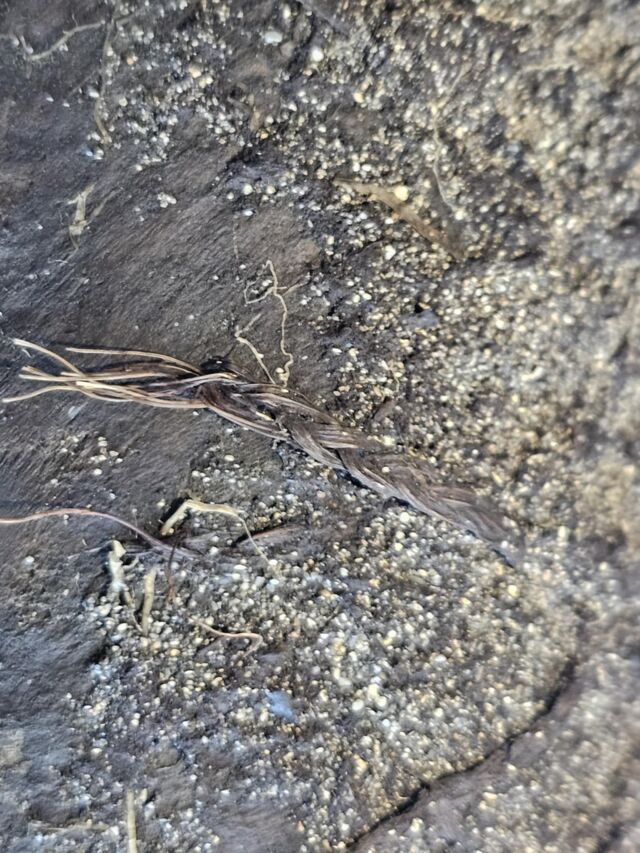
Video
Watch the video to explore the Chatham Island Dinosaur Locality! Don’t miss this fascinating look at one of the most significant paleontological sites in New Zealand.
Conclusion: A Groundbreaking Moment in Polynesian and New Zealand Archaeology
The discovery of the ocean-going waka on the Chatham Islands represents a pivotal moment in New Zealand archaeology. It offers a rare glimpse into the seafaring traditions of Polynesia and provides an opportunity to reconnect with the ancestral narratives of the local iwi and Moriori.
As further research and excavation continue, the waka will undoubtedly become a symbol of Polynesian exploration, resilience, and cultural heritage. This remarkable find has not only reshaped our understanding of Polynesian history but also reaffirmed the significance of the Chatham Islands as a key point in the story of the Pacific’s ancient maritime journeys.
